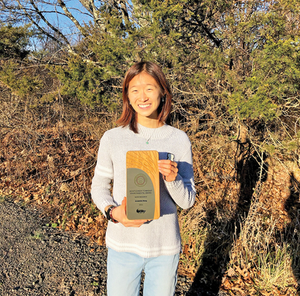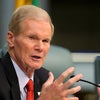The COVID-19 pandemic in February 2020 has had a profound impact on daily life. The result of pandemic resilience strategies in cities has seen a shift in the way that residents interact with the built environment and how they live their daily lives. Cities have seen a shift in how residents use the streets, travel, eat at restaurants, and attend festivals as the pandemic progressed. The evidence so far suggests that many of these changes are likely to remain permanent.
The great outdoors move
Many towns avoided large indoor events and many were moved outside if they were not cancelled. As organizers preferred venues that could reduce the spread of COVID-19, music festivals, graduation ceremonies, and private parties were often moved outdoors.
Many restaurants have added outdoor dining options to their menus with permission from local governments. Sometimes, this meant closing streets or removing parking spots in order to free up space. To extend their outdoor dining season, some restaurants also invested in heat lamps, outdoor furniture, and tents.
COVID-19 redefined dining in cities
New York City is an example of how cities can transform public spaces. The city has given in 8,550 curbside parking spots that are publicly ownedAccording to local data, it has been over a year since the pandemic began. The program was also declared by the former New York Mayor de BlasioIt will be permanent. This act of agility in the face a challenge helped many restaurants to stay in business during the pandemic.
In a recent interview with The New York PostAndrew Rigie from the Hospitality Alliance, who represents many city restaurants, said that outdoor dining has transformed New York Citys streets and has been a crucial lifeline for thousands and jobs throughout the five boroughs in the COVID-19 epidemic.
Rigie added [This]Announcement to make outdoor dining permanent and to allow the use heat lamps to keep customers warm in the colder months. This is a major step towards rebuilding a stronger, more resilient, and more livable city.
Increasing restaurant revenue means more income via taxes for the city, as well as more dining options available for locals. These trends are not for everyone. Parking spots converted to outdoor diningSome New York residents opposed it. For people who are more inclined to bike or walk within their neighborhood, it is a good thing to make it harder to park in congestion cities.
In cities like Toronto, access to city streets for automobiles is even more restricted. Washington, D.C.To Seattle. New York City has maintained this status since then. Open Street program, which gives priority for pedestrians and bikers along certain roads. Curb extensions are used to limit parking and car access in other areas, thereby allowing for more open space.
COVID-19 had other long-term impacts on communities
The expansion of outdoor life is not limited to cafes and restaurants.
Many schools, camps and daycare centers also moved their programs outside. Maine schools were granted grants to build durable gazebos. outdoor classroomsThat could last for decades. Parents and students have been supportive of the move to the outdoors, despite COVID-19.
Numerous studiesStudies show that students learn best outdoors so this approach could prove beneficial for student achievement. It is especially important for Children with ADHDSpend time in nature to improve their ability to focus and reduce stress.
Adults also reap the benefits. For example: Vitamin DSunlight is vital for a healthy immune response.
The pandemic caused other problems. Gardening to quickly gain popularityMany stores were unable to stock these supplies. Johnys Selected Seeds saw a 270 percent increase of their spring sales in 2020 due to the rising demand for seeds.
Beyond dining: Will these changes in cities and towns last?
Not everyone can afford to eat out at restaurants, or have food delivered. Local food shortages, as well as other factors that contribute to food insecurity, encouraged people to become more self-reliant. There were many food pantries that had long lines and empty grocery shelves due to disruptions in the food supply chain. Families without ample garden space may need to rent. Community garden plotsMany people can now nurture their green thumbs.
Some pandemic trends have a positive environmental impact. For example, Ridership on public transportMany cities saw their demand drop in 2020, and it has only recently rebounded in certain metropolitan areas. A decrease in ridership and a lower demand could lead to a reduction in service. Increased Demand for used and new carsAlso, concerns are raised about the viability of the U.S. public transport network in the long-term.
Urban planners had the opportunity to make changes to their plans to create more resilient cities in the long-term, thanks to the unprecedented changes caused by the pandemic. These open street programs, which include outdoor dining, education, bike lanes, gardening, and other activities, are all promising indicators of more sustainable cities. Not necessarily equitable. However, many people want to return to pre-pandemic times. Local leaders are trying to help. San JoseTo MiamiFeel pressure to reopen streets to cars again.
Co-written withLeonkaye
Image credit: Albert HuUnsplash



